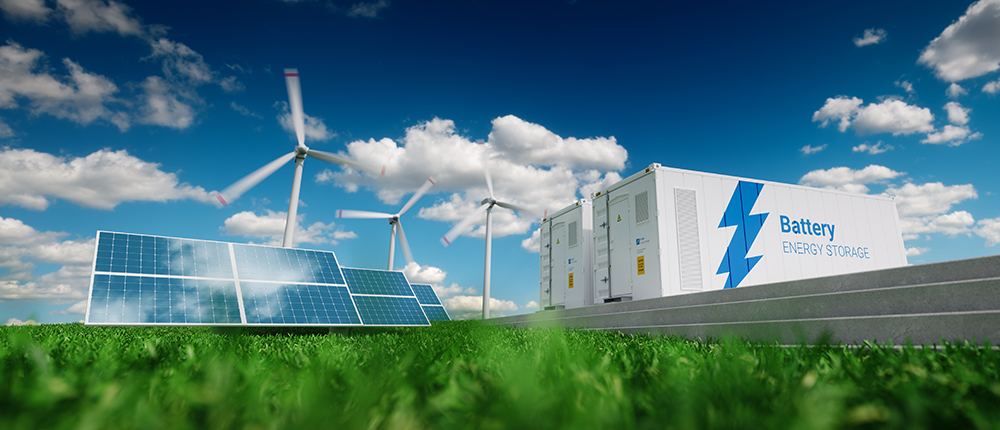Apart from helping smoothen grid integration of renewables, battery storage can also help discoms with demand side management

The Government of India has set an ambitious target of 175 giga-watts (GW) of renewable power to be installed by 2022. This means a significant amount of power from renewable sources will be injected into India's electricity mix in the near future, raising operational issues especially for electricity distribution companies (discoms).
While the cost of renewables has fallen significantly in the past few years, a major issue with renewables such as solar and wind energy is their intermittency in nature. Battery Energy Storage Systems (BESS) can help smoothen the renewable energy (RE) profile. As the name suggests, BESS can store excess power generated from renewable sources and supply it when the sun is not shining or the wind not flowing, making it the system more stable.
As regards the operational issues arising from renewables, traditionally the flow of electricity has been uni-directional, i.e. from the distribution utilities to the consumers. However, solar PV plants installed under the net metering system and integration of a large number of distributed Electric Vehicle (EV) charging stations with the power distribution network will lead to power flowing both to and from the discoms. It has been proposed that EV batteries could supply power back to the utility grid, just like the net-metering system does. Here too, battery storage can be used to stabilise issues such as voltage fluctuation and power storage at the local level.
TERI has been working on projects exploring battery storage systems. It is also conducting feasibility studies with three distribution companies (both public and private discoms) to understand viability of BESS. While there are other tools available for storage, the focus is on BESS due to its operational flexibility and falling costs. According to Dr Ajay Mathur, Director General, TERI, by mid 2020s, batteries will be cheap enough for 24-hour power supply from renewables to prove competitive to electricity generated from coal powered plants.
The use of battery storage in the existing power grid also has a demand-side management dimension. Discoms these days are faced with increasing power demands, especially at certain times of the day or year. For e.g., the peak demand in Delhi crossed 7,000 megawatts (MW) during last summer, and it is expected to reach 8,000+ MW this year. This puts a lot of pressure on discoms as they have to buy additional power at higher rates to meet the peak demand. However, if excess power from off-peak hours is stored locally in BESS, the same can be supplied to the consumer without the discom having to stretch its pockets.
The need for a BESS ecosystem
However, BESS usage in India is still at a nascent stage. In a bid to explore more of how to bring aboutits widespread usage, a thematic track on 'Role of Battery Energy Storage System in Electricity Distribution' was also held on the first day of the World Sustainable Development Summit (WSDS) on 11th February. Issues such as the need for BESS in maintaining grid security with increasing renewable energy penetration were discussed in the track. The need to develop an entire BESS eco-system consisting of research and development, marketing, appropriate business models, the requiredsupporting technology, and manufacturing supportwere also discussed.
In the inaugural address, Dr Anindya Narayan Biswas (IAS), Commissioner, Department of Power and Non-Conventional Energy Sources, Government of West Bengal cited global case studies of BESS at distribution level and their replicability in case of West Bengal's distribution network. In his keynote address, Dr PC Pant, Scientist 'F' & Director, Ministry of New and Renewable Energy, Government of India, even talked about the National Energy Storage Mission that is in the working stage.
Prof (Dr.) SC Srivastava, Department of Electrical Engineering, Indian Institute of Technology, Kanpur, emphasised the need for storage in facilitating a transition towards cleaner technologies and Dr Ajay Mathur, Director General, TERI, reiterated that high renewables penetration would require a portfolio of flexibility options that include BESS.
A book titled 'DSM Action Plan for MESCOM based on Load Research' based on TERI's work in DSM (Demand Side Management) in Mangalore was also released at the event.
